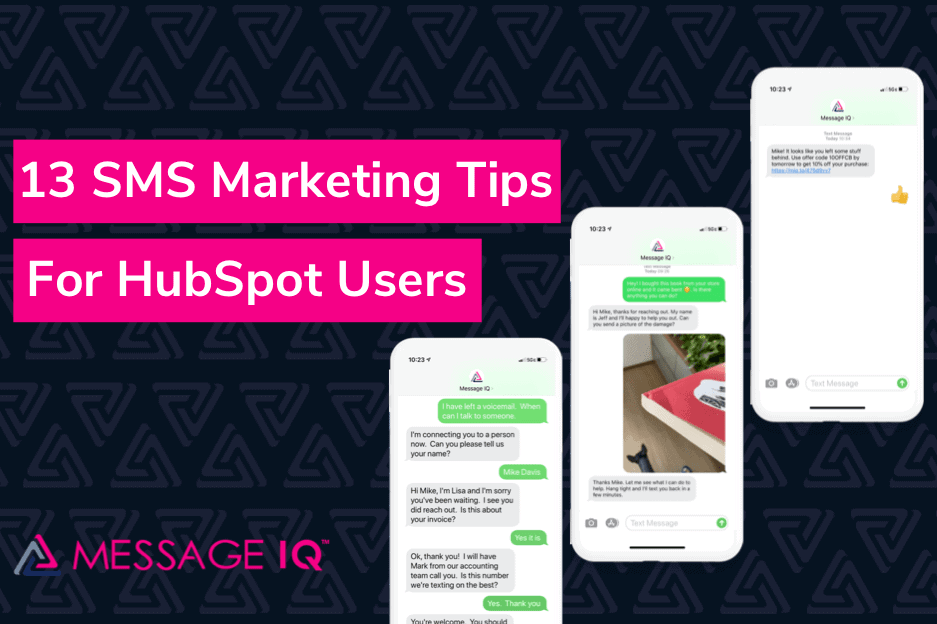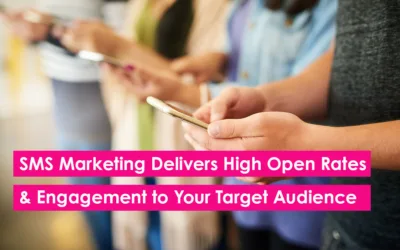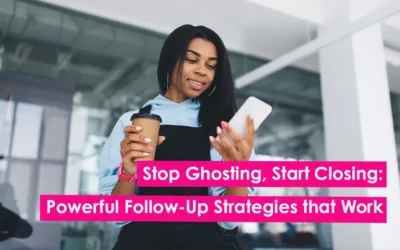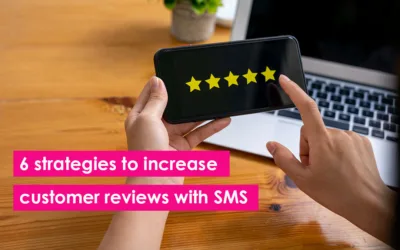For many HubSpot marketers, there’s no question that they should be using SMS marketing. They know the in’s and out’s of email. So they sign up for SMS software and set up their profile, but then they hit an obstacle: What exactly should you text? If this sounds familiar, you’re not alone. In this article you’ll learn:
- practical tips to help you reach your audience faster and more effectively through texting
- how to use analytics to make better marketing decision
- how SMS works in your HubSpot account
Let’s get started.
Customer satisfaction
1. Introduce yourself in the first text
As consumers, we tend to distrust texts from an unknown number at first glance. It could be spam or scammers trying to hack your stuff. But we are open to trusting people. That’s why one way to overcome skepticism is to show the human side of your business. Consider introducing yourself — the person behind the screen — to your subscribers, especially if you want to boost the response rate for your campaign. There are two great places to do this:
1. In the first line of your text:
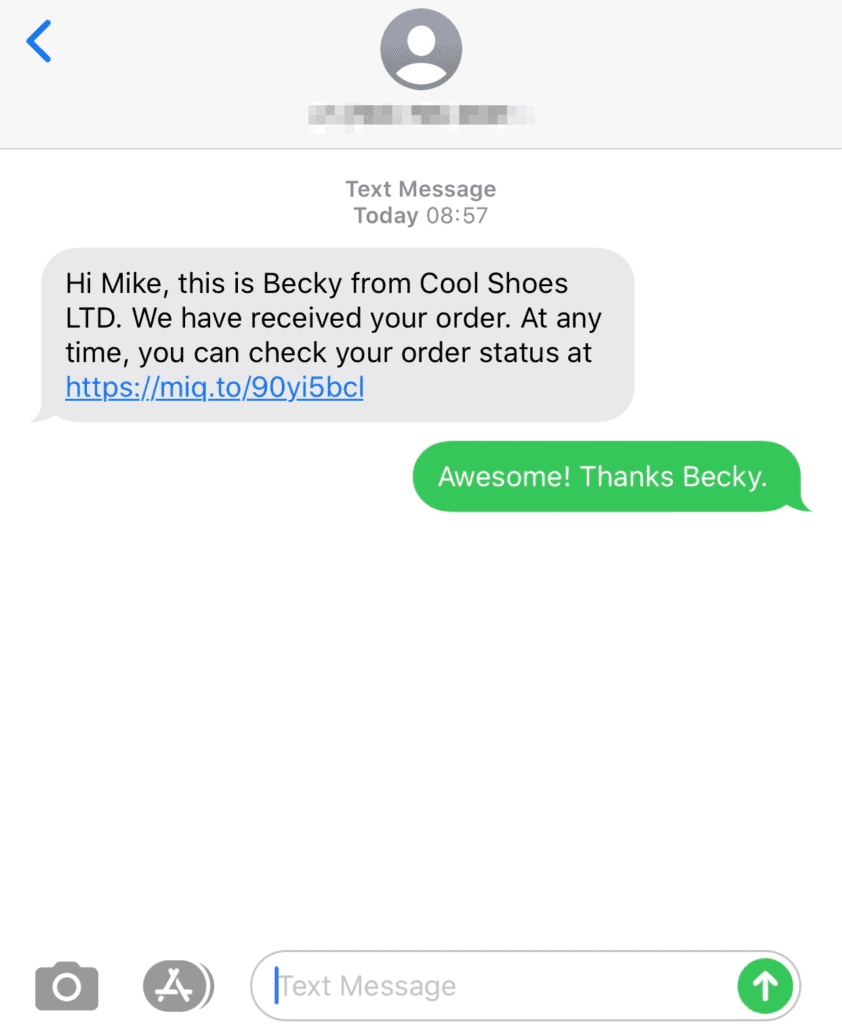
2. At the end of your first message:
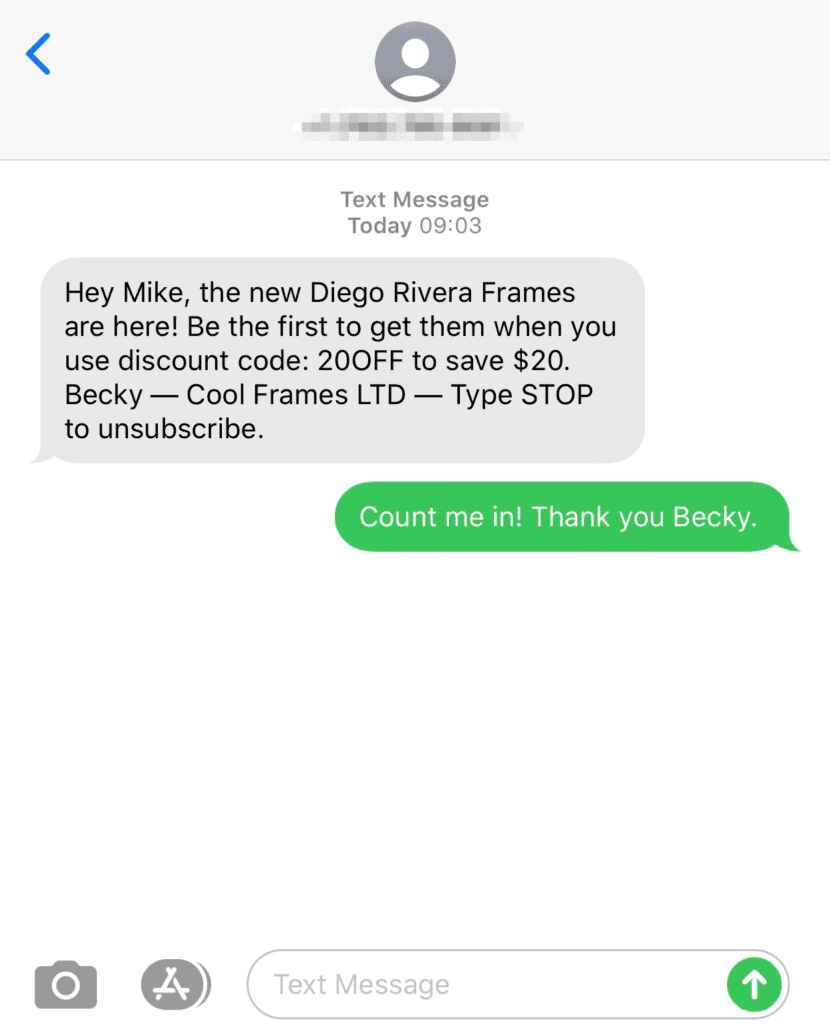
By focusing on you as a person instead of just your products, you can help customers get to know you better. This helps lay the foundation for them to trust your business, too.
2. Get survey responses
SMS surveys make it easy to gather valuable feedback from your subscribers, helping improve your product or service and grow your business. SMS surveys also provide engagement at scale for your business and can make subscribers feel valued by asking for their feedback. It’s also affordable. An SMS survey will only cost you a few cents per message. You can offer the survey in the inbox or send them to a review site to leave public feedback. Regardless, it’s easy for subscribers to give their feedback when you send a survey through text. Here are some ideas to inspire your next campaign:
- eCommerce stores: Send satisfaction surveys out after purchase, learn what promos or products attract them, measure the efficiency of your customer service efforts.
- Food venues: Send customer service satisfaction surveys, invite them to vote for their favorite dish, offer promos in exchange for filling out feedback.
- Retail: Send “how did you hear about us?” questionnaires to learn more about your customers, find out how your store compares up to competitors, ask customers their opinion or advice on upcoming sales or promos.
- Travel: Survey guests to find out about their booking experience, gauge interest in packages and promotions, ask about a recent stay, find out what keeps customers coming back to stay.
3. Designate a number for text-based customer support
You might not think your customers want to send you a text for customer support, but they do! Placing a phone number on your website, social media profiles, or brick-n-mortar store opens up a quick and easy way for customers to get help.
4. Send MMS messages
Multimedia messaging is another type of SMS message that can help you delight customers. Think about it: text’s today are full of pictures, GIFs, emojis, and stickers. Now, you can jump on the same trend. It helps you become more visual in conversations, plus, can offer a 55% boost to engagement with your messages.
MMS can help you create a more interactive and memorable experience for your customers. Fill your messages with photos, coupons, funny GIFS — and shine a light on your personality while building closer ties with your subscribers through text.
5. Let customers text product or service questions
When customers have questions or an issue with your product or service, letting them text you removes any hesitation from contacting you. It’s cheaper than offering phone support and more efficient than email. Customers can ask simple questions via text. Or more time-sensitive questions they wouldn’t ask through email because the response time is long. They can even send MMS messages to your business, which is useful for accessing damage claim requests or shipping returns.
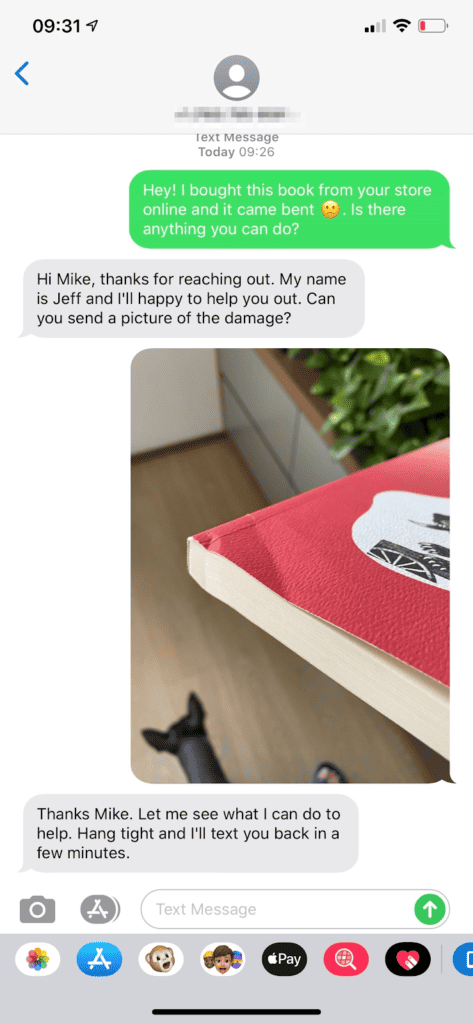
Letting customers text you will save time and resources, plus, give excellent customer service that’ll keep customers around for the long-run.
Lead generation and nurturing
6. Send appointment reminders
Here’s a concept that’s simple yet effective: Set up appointments (and send reminders for them) using text messaging to reduce no-show rates. Texting is immediate by nature, which keeps your customers’ bookings and appointments top of mind. When you automate the text reminders in HubSpot, you can:
- Reduce no-show
- Lower reschedule rates
- Free up employees time (so they can focus on high-value work)
If you already have an automated email reminder sequence in your workflow, replace a few messages with a text. It takes minutes and can save you hours of time each week on outreach.
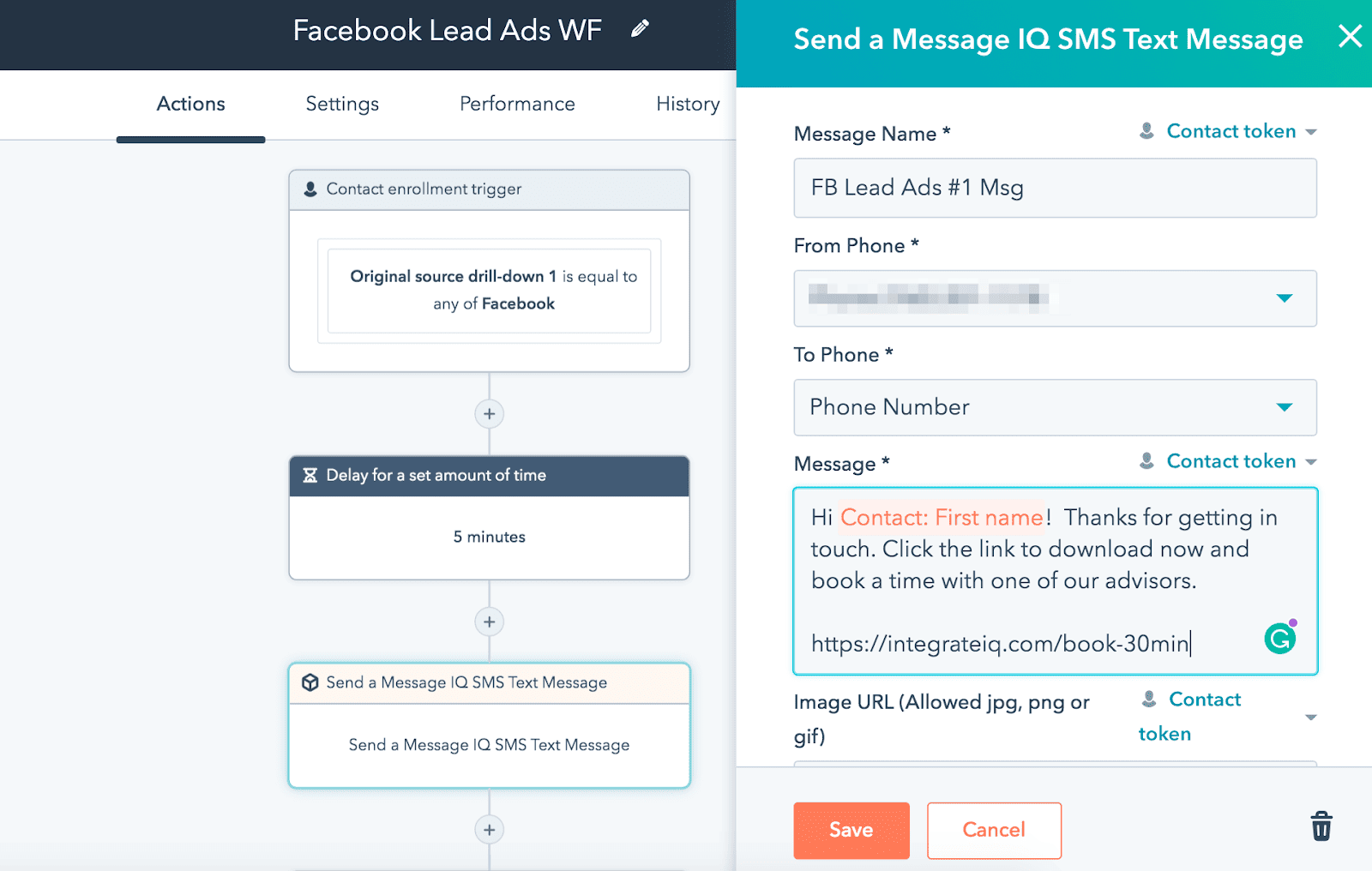
7. Segment subscribers into active lists
Active lists update automatically and contacts join the list whenever they meet the criteria and leave the list when they no longer meet the criteria. For example, an active list would be valuable when you have an SMS campaign to a specific group of contacts running over time, and always want the list to update with new contacts who meet the criteria.
Examples of when you can use active lists include:
- sending marketing texts based on each persona’s properties and behavior. If you send out a regular SMS newsletter, an active list automatically manages the changing list of subscribers.
- grouping your contacts by lifecycle stage and to identify behavior and properties for contacts in each stage using up to date data.
- segmenting contacts based on properties that change frequently over time, such as HubSpot score.
8. Re-engage cold subscribers
Cold subscribers are those contacts who’ve stopped interacting with your campaigns over a period of time. This might be someone who hasn’t opened or clicked an email for two months or answered a call in three weeks. Within HubSpot, you can set up triggers that identify when someone hasn’t engaged with your campaigns over a specific period of time. And then reach out based on the actions they have or haven’t taken.
What’s the best way to win them back? Send a text. Similar to the win-back emails you probably already have, you can opt to send a text to cold subscribers.

There’s a 90% chance they’ll read it within three minutes, and can respond if they want to stay on your list or not.
9. Send follow-ups
Many businesses don’t send personalized follow-ups after someone buys a product. They either send a boring, transactional email or nothing at all. It’s during this time where people are most likely to respond to any messages you send. Text message follow-ups are a nice personal touch to engage with customers after they buy something. It shows people you value their time and money, and helps build trust with your business. You have several opportunities to engage with customers and provide value, introduce new ways to use your products and services, offer help, or send a limited time offer:
- Order confirmation: Send a quick text to reassure customers their order was received.
- Shipping confirmation: Keep customers informed on their orders by sending a quick message when it ships.
- Product feedback or reviews: After the estimated delivery date, send a text asking how their experience is going with your product. If it’s good, you can always ask for a public review on sites like Amazon, G2, TripAdvisor, etc.
- Loyalty program sign up: Once you know a customer is satisfied with your product or service, ask them to join a loyalty or referral program for exclusive promos and discounts.
While each business will have a slightly different post-purchase workflow, it’s important to include one in your overall post-purchase strategy. With text, you can easily follow-up in a meaningful and efficient way, and delight customers so they continue to buy from your business.
Related: 21 Best Text Message Marketing Templates to Drive Leads and Sales
Making the sale
10. Create a sense of urgency
Case studies have shown that some of the most effective types of marketing campaigns are ones that create urgency by encouraging customers to buy right now. Limited-time offer promos are popular because they convince consumers that waiting to purchase will cause them to miss out on the best deal.
A common text message with a good promo will look like this:
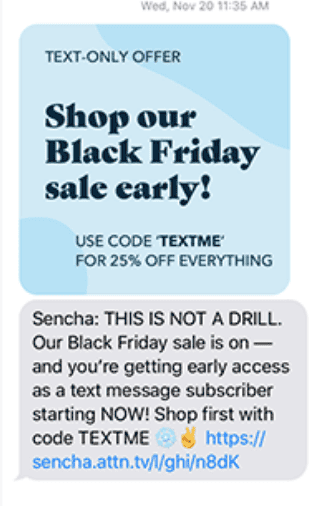
When you go to write a text, consider where you might be able to add a bit of scarcity or urgency to your offer.
Three ways to increase urgency for sales are:
- Add urgency in your call-to-action. Add the word “Now” to your CTA. For example, rather than say Redeem this coupon, use Redeem this coupon now to improve conversions.
- Imply stock urgency. Advise subscribers that if they don’t act soon, they might miss out. Show instances of stock urgency in your message that suggest products won’t be available for long.
- Add time-based urgency. Use phrases such as “One day only”, “Limited time”, “Offer expires”, or “Deadline” in your text.
11. Send cart abandonment texts
If you recover carts with automated email workflows in HubSpot, you can easily replace them with a text. Since people read 90% of texts within three minutes of receipt, it’s more likely they’ll see your abandoned cart message and complete the purchase.
Cart recovery texts can include product images and session restore links, letting potential customers revisit their shopping cart with one click.
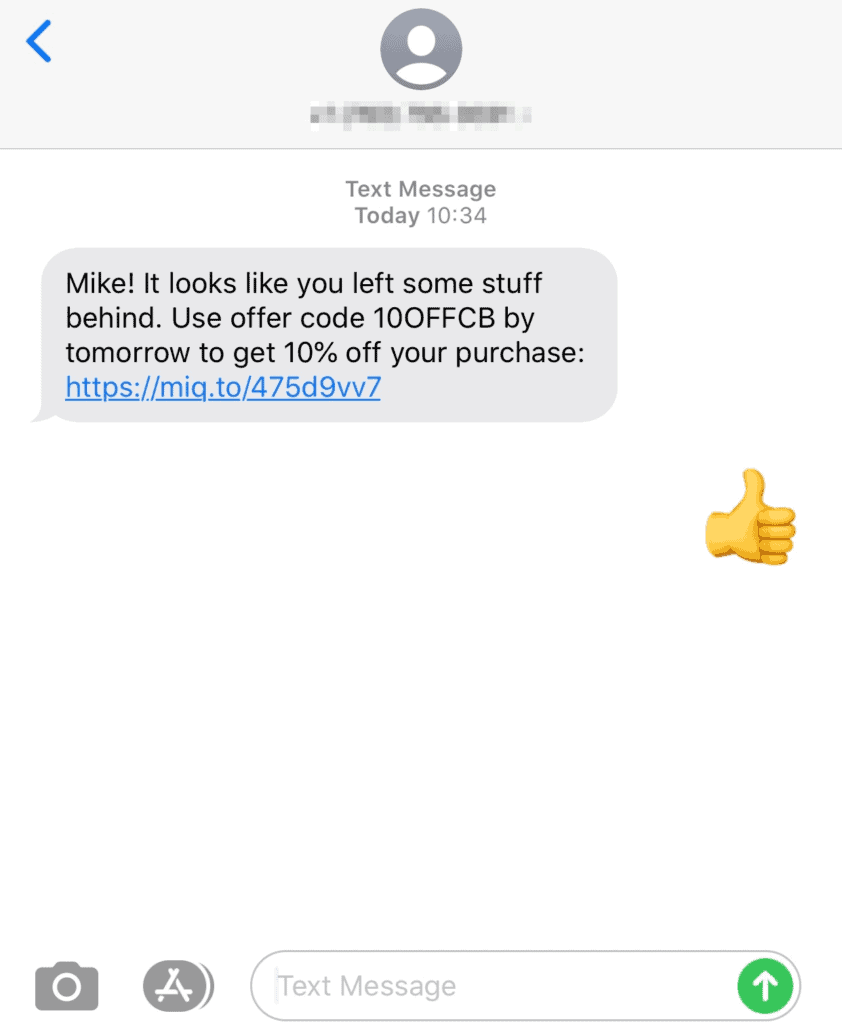
A series of messages works 63% better than a single one for abandonment cart messages, according to Omnisend.
For an abandoned cart workflow, consider structuring your texts like this:
Text 1: Cart reminder (sent an hour after cart abandonment)
Text 2: Follow up (sent a day later)
Text 3: Discount (sent a day after text two)
When writing your cart abandonment texts, remember three key factors:
- Personalize the text. What products were abandoned? Why did they choose to not buy the product and how can you change their mind?
- Add urgency. Encourage shoppers to complete the purchasing by using phrases such as “Buy Now” or “Return to Your Cart”.
- Keep it short and snappy. You don’t have the space to write subject lines and longer copy like email. Make your messages concise and convincing to convince people to take action.
12. Upsell and cross sell
Want to get customers to spend more money and improve their satisfaction level? Upselling and cross-selling through text is the way to go. Upselling will give customers a premium version of a product or service, while cross-selling will help them get the most from their purchase by offering complementary items. Texting gives you the chance to casually upsell in a natural way. If you’re talking to a potential customer in Live Chat before they buy, you can offer add-ons and upgrades in the chat. Your business makes a little extra money, and the customer gets a personalized offer that boosts their overall experience.
13. Send promotional texts to high-value static lists
If you have a static list with contacts who you consider high-value or likely to buy, send a one-time SMS promo to them. This can be outside the normal campaigns you run and for lists of contacts that don’t change, such as event attendees or a list gathered from a trade show.
Tapping your analytics
Email marketers can get a sense of their campaign health by observing click-through rates and open rates. SMS marketers, on the other hand, didn’t have the same opportunities to observe customer reactions to what messages they send.
That’s where Message IQ comes in.
Message IQ Charts give you the means to review your SMS campaigns activity, get insight into your subscribers, and analyze your subscribers’ engagement.
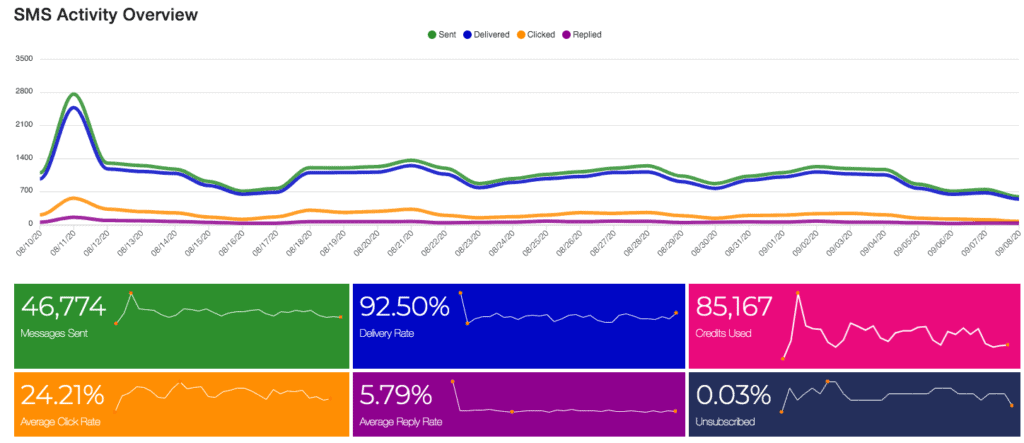
You can also access message-level metrics to zero in on your best-performing texts.
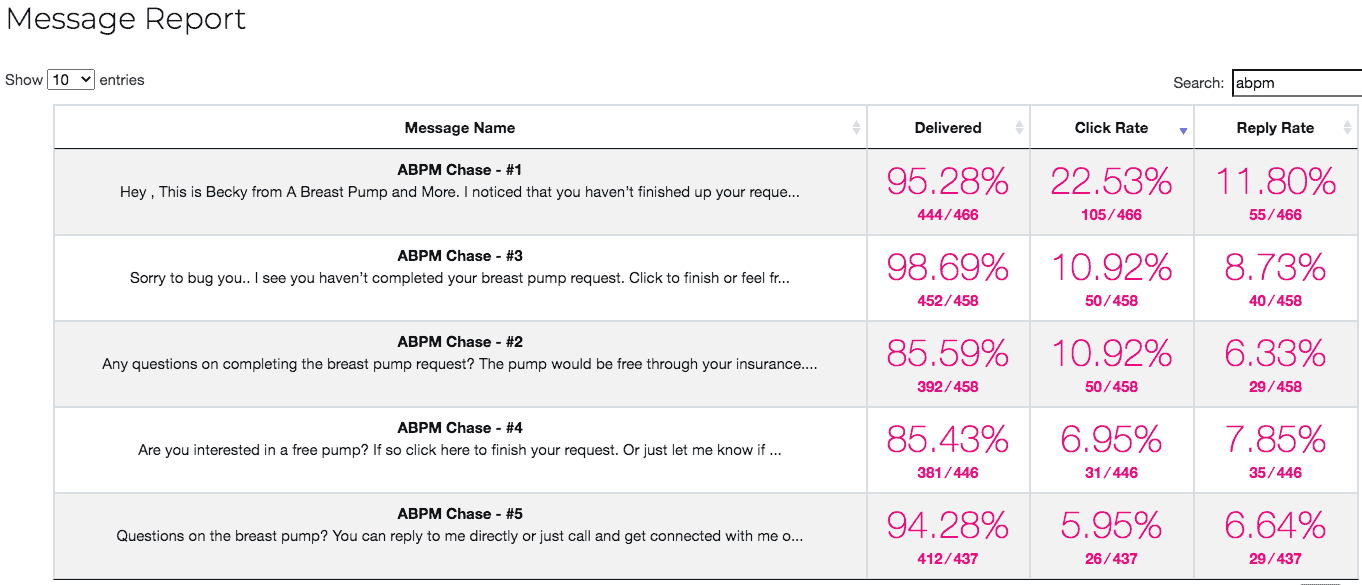
The dashboard covers the common reporting and analysis needs of most HubSpot marketers, including:
- Message: the individual text message in your campaign
- Sent: the messages sent from your account
- Undelivered: the number of messages not received by subscribers
- Delivered: the number of messages received by subscribers
- Replies: the number of responses your message received
- Replied: aka reply rate, or the ratio of people who responded to messages
- Clicks: the total number of clicks to a specific link in your message
- Clicks %: the ratio of people who clicked a link in your message compared to total number of people who opened it.
By tapping into message-level analytics, you can easily track and optimize campaigns and show better ROI for your text messaging efforts. These metrics tie back into your goals in HubSpot and can help you send the right message, at the right time, to the right person.
Improving your SMS marketing campaigns
If you want to improve your SMS marketing campaigns quickly, combine these tips. Start by replacing an SMS message with an email in your current workflows. See which performs better, and start to incorporate more texts as you go.

